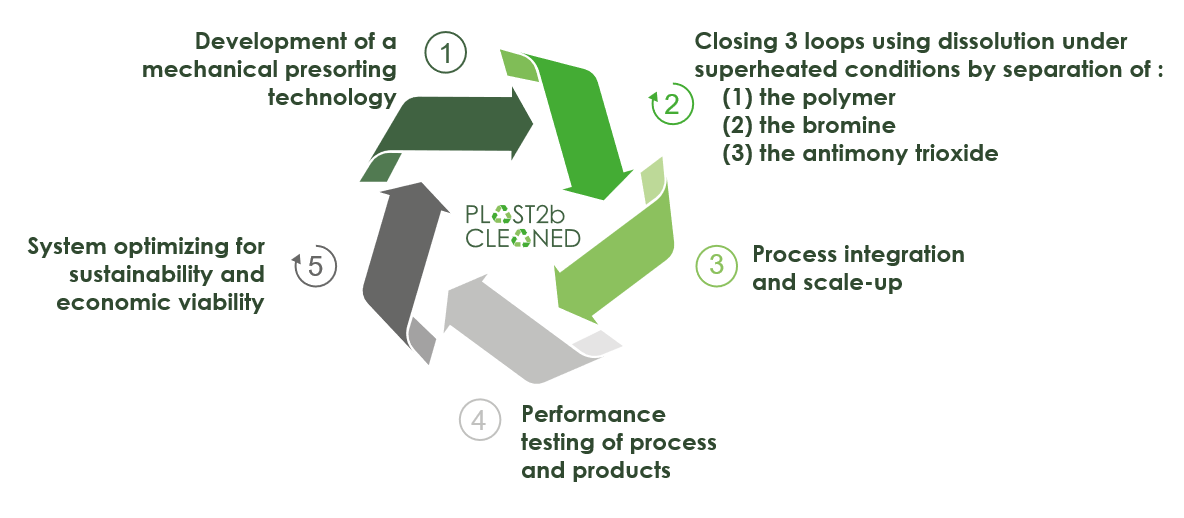OBJECTIVES
The overall aim of PLAST2bCLEANED is to develop a human and enviromental safe recycling process for Waste Electrical and Electronic Equipment (WEEE) plastics in a technically feasible and economically viable manner.

The overall aim of PLAST2bCLEANED is to develop a human and enviromental safe recycling process for Waste Electrical and Electronic Equipment (WEEE) plastics in a technically feasible and economically viable manner.



WP1 Pre-process: sensing and sorting plastics to be separated. The output will be used in WP2 and WP3.
In WP2 Process development: dissolution and recovery to recycle polymer, bromine fraction and antimony fraction using the output of WP1.
In WP3 Process system integration & scale up the technology of WP2 is integrated in a WEEE recycling unit.
In WP4 Performance testing of process and products, the effectiveness of the process and the quality of the output fraction is controlled.
In WP5 Environmental and Economic assessment is performed. At the start, a quick scan is done to guide choices in WP1-WP3. At the end of the project an elaborated environmental and economic assessment is performed to prove the sustainability and economic viability of PLAST2bCLEANED technology.
WP6 Dissemination, exploitation and capacity building contains dissemination, exploitation and communication activities.
In WP7 Project Management the overall management for the whole project will take place.
In the PLAST2bCLEANED’ implementation chart TNO is responsible for the coordination, WP2, WP5, WP7 and WP8 (ethics requirement).
From their side, Gaiker is in charge of WP1, Fraunhofer for WP3, Coolrec of WP4 and SIE for WP6.
The rest of the partners responsibilities is as follows:





The project Plast2bCleaned will address several Sustainable Development Goals (SDGs).
Overall it contributes to SDG 12: Responsible consumption and production with the focus to Ensure sustainable consumption and production patterns and especially hereto:
By 2030, achieve the sustainable management and efficient use of natural resources
By 2020, achieve the environmentally sound management of chemicals and all wastes throughout their life cycle, in accordance with agreed international frameworks, and significantly reduce their release to air, water and soil in order to minimise their adverse impacts on human health and the environment
By 2030, substantially reduce waste generation through prevention, reduction, recycling and reuse
Encourage companies, especially large and transnational companies, to adopt sustainable practices and to integrate sustainability information into their reporting cycle.
Besides, the project addresses:
